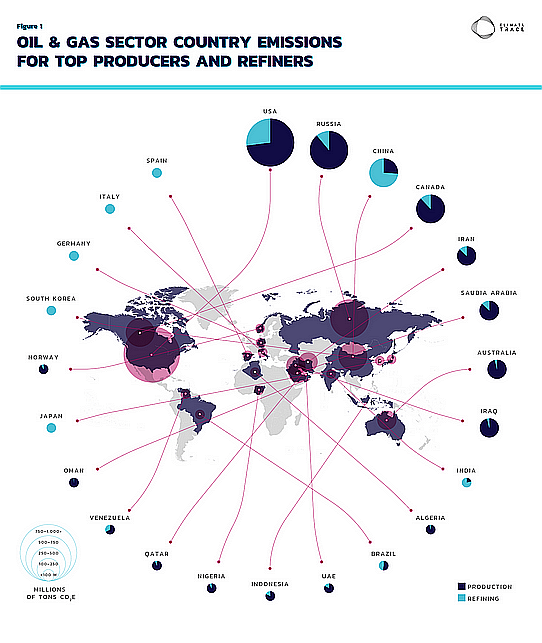Countries were recently compared based on the emissions intensity of their oil and gas activities, including production, processing, and transportation, using a CO2e 20-year global warming potential. Because it shows which oils and gases are “dirtier,” independent of amount generated, emissions intensity is an excellent indicator for direct comparison.

This analysis was made feasible by two climate intelligence databases: the Oil Climate Index plus Gas and Climate TRACE, both of which just released updated national emissions inventories during COP27.
The study included the most thorough global inventory of greenhouse gas (GHG) emissions at the facility level to date, as well as emissions data for 72,612 individual sources globally.

The key highlights of the report are –
- Half of the 50 largest sources of emissions are oil and gas production fields and their associated facilities.
- The top 500 sources represent less than 1% of the total Climate TRACE inventory but account for 14% of global emissions for 2021 – more than the annual emissions of the United States.
- Globally, emissions from oil and gas production are significantly under-reported, with Climate TRACE data showing that of the countries required to report regularly to the UNFCCC, emissions are as much as three times higher.

Our objective is that by lifting the curtain on the climate implications of every oil and gas resource globally using these tools, governments and markets alike will be able to take immediate actions to prioritize lower-emitting sources as we all strive for a 1.5°C future.
This is a PR Agency Feed; edited by Clean Future Team





